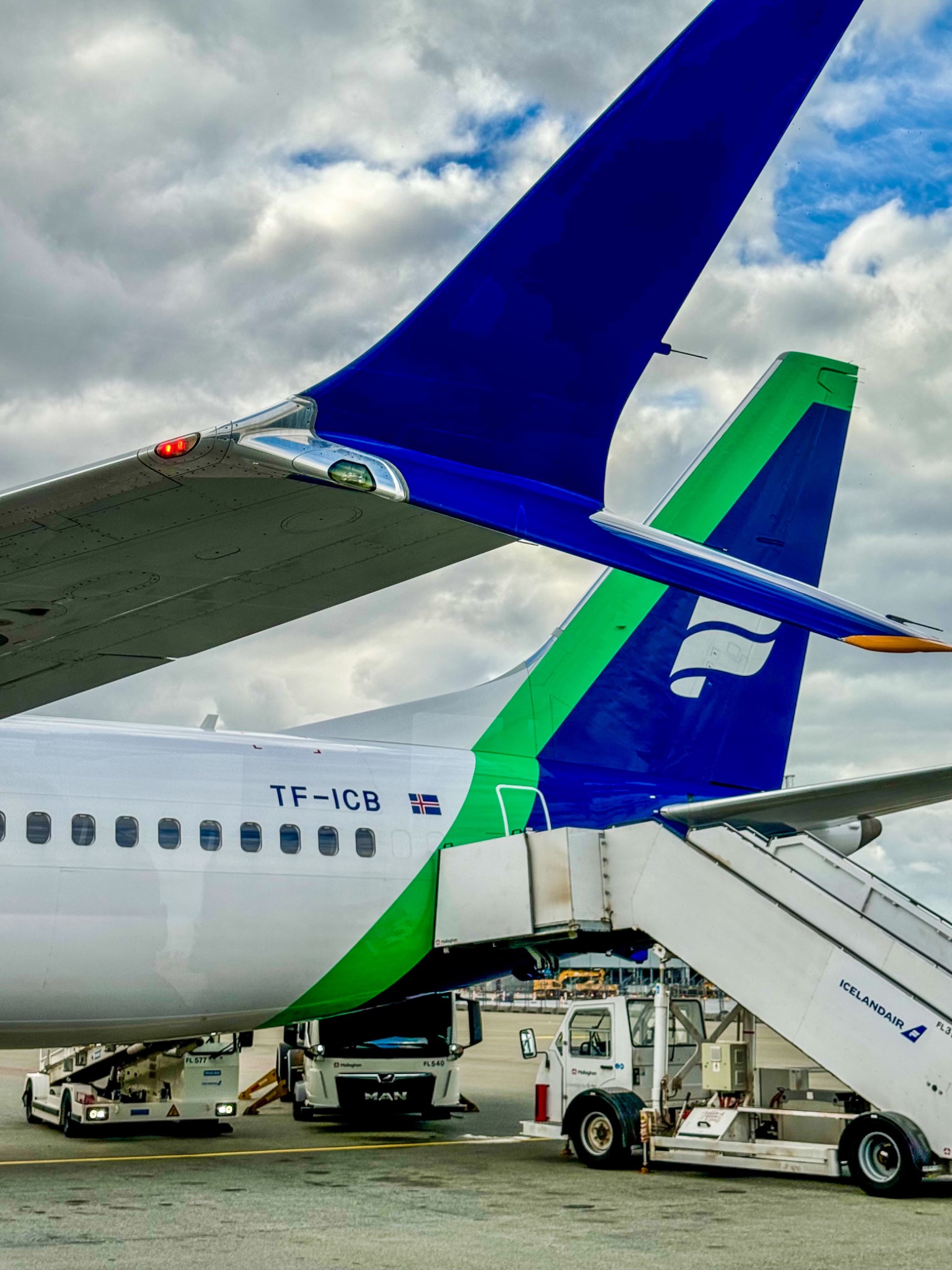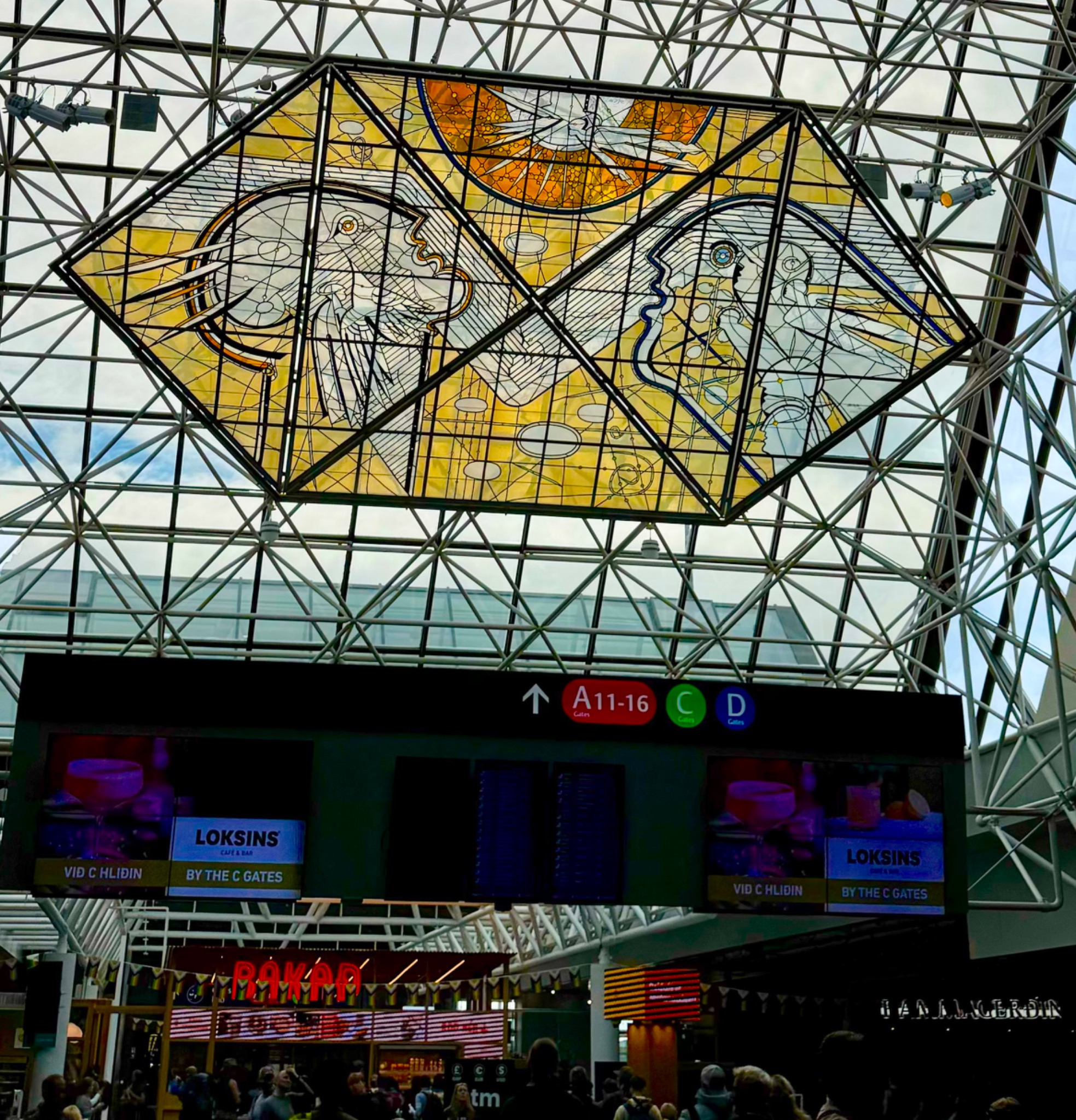
AIRLINE REVIEW: What It’s Like to Fly Icelandair
BY MARK CHESNUT
Icelandair has a reputation as a reliable airline that offers affordable flights to Iceland and Europe. The airline also offers the most choices for travelers headed to Reykjavik for an Iceland vacation. But what’s it really like to fly this legendary airline?
During my recent trip to Iceland, I flew Icelandair between New York’s John F. Kennedy International Airport and Reykjavik’s Keflavik International Airport, which serves as Iceland’s international gateway airport. Here’s a report about my experience, so you can learn what it’s like to fly Icelandair and decide if it’s the best choice for your own trip to Iceland or Europe. (You can also watch my Instagram reel here.)
Is Icelandair a Good Airline?

Icelandair is certified as a three-star airline by Skytrax, which puts it on the same level as carriers including Aeromexico, Air Europa, Alitalia and American Airlines, to name a few.
Icelandair isn't some fly-by-night operation. They’ve been around since 1937 (operating first as Flugfélag Akureyrar), which makes them one of the oldest airlines in the world. Starting as a small domestic carrier, they’ve grown into a transatlantic player that connects Europe and North America. I remember as a child reading stories about people who got great airfares — and enjoyed stopovers in Iceland — en route to Europe. That made it even more exciting for me to finally board a plane to Reykjavik.
I had the option to fly either Icelandair or PLAY, a newer, low-cost Icelandic carrier, but chose Icelandair since it’s been around longer and also ties in with JetBlue’s frequent flyer program. Icelandair also partners with the frequent flyer programs of Alaska Airlines, and you may want to consider joining Icelandair’s own frequent flyer program, Saga Club, if you plan on flying the airline regularly.
Which Terminal at JFK Airport Does Icelandair Operate From?

Icelandair operates from Terminal 7 at JFK airport; it’s one of the oldest terminals but offers the advantage of being located closer to an AirTrain stop than some of the newer terminals; the relatively small size of the terminal also means there’s less walking necessary once you’re inside the building.
I had checked in and obtained by boarding pass using the Icelandair app and wasn’t checking luggage, so I proceeded right to the security area. Just after I joined the line it ballooned behind me, since there were multiple overnight, Europe-bound flights about to depart — so it’s a good idea to arrive early.
Terminal 7 at JFK has a decent food court, and I ate a tasty pizza before boarding, since I planned to sleep for most of the overnight flight.
A gate agent called me to the departure gate to check my passport and also asked me to place my rollaboard suitcase in the sizer box. It didn’t fit, so she made me check the bag. Icelandair size requirements are more limited and more strictly enforced than some other airlines that I fly, so pack light if you want to bring only carry-ons, or be aware that you may have to check one of them if you get called aside.
Another thing to note: Icelandair doesn’t board by zone, group or row number. Instead, there is just one line for Saga Premium (the airline’s business-class section) and another line for all passengers in the economy section — I was glad that I arrived early at the gate so that I was able to be near the front of the line (especially important if you want to assure access to overhead storage space).
I slept through almost the entire overnight flight, so read on to see my review of the inflight service on Icelandair on my return flight.
My final destination was Reykjavik. But note that even if you’re planning on just connecting in that airport, you can add a free stopover of up to seven nights in Iceland when booking with Icelandair.
•••••••
DON'T MISS: Exploring the Daring World of David LaChapelle's Photography in Mexico
••••••
How to Arrive at the Reykjavik Airport

After landing the following morning, I deplaned and found myself on one of the airport concourses, mixing with both arriving and departing passengers. Since this is a large hub for connecting flights, this may be a bit confusing at first, since it appears you don’t need to go through immigration or customs even if your final destination is Iceland — but you do. Simply follow the signs to immigration (at one point I even followed a fast-walking Icelandair flight attendant, since she seemed to know where she was going).
Depending on where your plane has docked, it may be a bit of a walk to customs and immigration, but I found the actual immigration line to be fast and easy, and I didn’t have to wait long for luggage, either.
I was met by my ground transportation representative just outside the baggage claim and customs area.
Travel Tips for Departing from the Reykjavik Airport
Reykjavik’s Keflavik International Airport is a modern facility, and I found its check-in and baggage drop-off counters to be uncrowded, and there were also plenty of self-check-in kiosks. Since I already had my boarding pass and wasn’t checking luggage, I proceeded straight to the security area, which was uncrowded and didn’t take long to go through.
On the day of my departure, Icelandair was only posting gate numbers about an hour before departure time, so my friend Malik and I took a seat in a central lounge area, where “Flugþrá (Yearning for Flight),” a giant, stained-glass piece of art provides an eye-catching visual.
As during my arrival a week earlier, I was confused about when I’d be going through passport control, since there was none near the security processing area. But I found that section after seeing that my departure would be from a gate in section D. Following the signs to section D, I proceeded through passport control screening before arriving at my gate. As with my arrival, the line was short and I sped through.
The Reykjavik airport overall, however, is quite bustling, especially since it’s such a popular transatlantic connecting hub. Much like Copa Airlines in Panama, Singapore Airlines in Singapore and Emirates in Dubai, Icelandair has built a solid connecting hub in a strategically located destination with a relatively small population, so you can expect to see lots of people on the concourse.
I found the lines to be shorter at the food and beverage outlets in the central lounge area compared to the food vendors in section D, so my recommendation is that if you need to eat or buy food before you board, get it at the first place that seems appealing and doesn’t have a line.
••••••
MEXICO TRAVEL TIPS: This Notorious Prison is Now a Spectacular Arts Center & Tourist Attraction
••••••
The Icelandair Boarding Experience

The initial boarding process went quickly; as at JFK, Icelandair doesn’t board by row, group or zone, so it’s a good idea to get to the gate early so that you can be one of the first in line to board.
Icelandair uses a kiosk (rather than a human) to scan boarding passes, which makes the process more efficient (airline staff did check passports just before I reached the gate).
After that, there was a bit of a wait: I waited in a second line to board a bus, which took us to the plane (here’s another air travel tip: stand near the door in the bus to be one of the first ones out, so you can be one of the first on the plane).
Unlike my flight from JFK (for which I had to check one bag at the gate), I was able to board this flight with both of my bags and my rollaboard fit in the overhead compartment with no problem.
Icelandair Inflight Service: What to Expect
On both of my flights, I flew aboard Icelandair Boeing 737 MAX 8 aircraft with interiors that looked quite new and were in excellent condition.
I found the flight attendants on both of my flights to be cheery and polite. I also liked their attractive uniforms; several flight attendants had enhanced their look with a rainbow scarf, in honor of pride month (which takes place in August in Iceland; there were also several pride decorations gracing the airport terminal, including a wall of rainbow-colored balloons that proved to be a popular selfie spot).
On a similarly interesting note, Icelandair uses gender-neutral term “dear passengers” for its inflight announcements in English, rather than “ladies and gentlemen.” This is truly a progressive airline!
Every seat in economy was furnished with a pillow (on my flight from JFK, the seats also had blankets, but that was an overnight flight and this was not).
Inflight entertainment is free and abundant on Icelandair; all seats have seatback screens with an array of movies, television series and other content available (you do need to pay for earbuds though, so you can save money by bringing your own).
There were two rounds of beverages served during our five-and-a-half hour flight; non-alcoholic beverages are free, and flight attendants also came around a third time with water.
There are no free meals in Icelandair’s economy cabin. Food is sold on board, and there’s an even larger menu of options from which to choose if you purchase in advance via the Icelandair app or website. I paid $11 in advance for a turkey sandwich on pretzel bread (some things are only available for purchase in advance, not the inflight menu).
We landed early at JFK and again, I appreciated the short walking distances at Terminal 7.
Overall, I found Icelandair a satisfactory option and would recommend it for transatlantic travel.

Post a comment